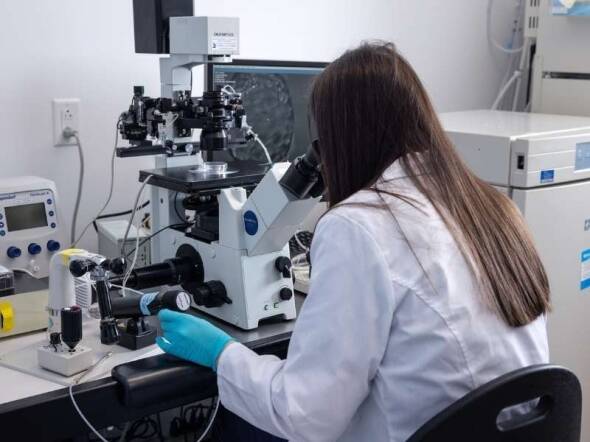Many people are familiar with In Vitro Fertilization (IVF) as a treatment option for infertility; however, what many people are not aware of is the length of the IVF timeline and that we now break it into two cycles. This is important when planning for your treatment, which takes 2 to 4 months.
Here’s a look at the stages that make up the two phases of the process:
Timing the IVF Cycle
The menstrual cycle prior to IVF prepares you for ovarian stimulation. Oral contraceptives may start at the beginning of the cycle to regulate your menses and help with the timing of the stimulation cycle. Alternatively, medication may start on day 21 of the cycle to help synchronize the ovaries to achieve better stimulation. Final testing and education will also be completed during this preparation cycle.
Ovarian Stimulation
This is the most familiar part of the IVF process. Using the hormone treatment selected by your doctor to best work with your body, it’s time to stimulate your ovaries to release as many viable eggs as possible. Most of the medications during this phase require you to self-administer medication by a small injection.
Careful monitoring is key at this stage of the treatment cycle, which can take between 8-12 days on average. Monitoring involves ultrasounds and checking estrogen levels to determine when the final step of this stage should be administered. As soon as peak ovarian stimulation is achieved, your doctor will advise you to take human chorionic gonadotropin (HCG) and/or leuprolide acetate to stimulate egg release.
Egg Retrieval
Timing is of the essence during egg retrieval. Patients should return to the doctor’s office within 36 hours after injection. This stage of the process is mildly invasive, requiring anesthesia, and uses a method called ultrasound-directed follicular aspiration to remove the mature eggs.
Embryo Growth
Using the predetermined sperm sample, retrieved eggs will be fertilized within hours of removal. It takes about six days until the fertilized embryo grows to a stage called the blastocyst. Only about a quarter of the eggs retrieved will reach this stage. This is the stage a fertilized embryo can be cryogenically frozen for future use and if desired, tested to help determine its ability to attach to the uterus.
Preparing the Uterus
This is where phase one ends and the uterus prepares for phase two, embryo transfer. We have found that implanting an embryo in the same cycle it was retrieved comes with higher risks. Our feeling is that if we do a fresh cycle, meaning we implant the same cycle as the retrieval, we may not be getting as good pregnancy outcomes as we should because the estrogen levels are higher. Because of this, we have made a conscious decision to freeze the embryos and wait for a cycle or two before transferring. Estrogen supplementation is usually used to thicken the lining and then progesterone supplementation is given to time the embryo transfer.
Embryo Transfer
Once the uterus is prepared, it is time for your viable embryo to be transferred to your uterus. This is a mildly invasive treatment and doesn’t require anesthesia.
After embryo transfer, it will take another 9 days until pregnancy can be determined. Additional viable embryos will remain cryogenically frozen to be used if additional IVF treatment cycles need to be completed.
For anyone considering fertility treatment options and IVF, this timeline sets up realistic expectations of the time it will take to complete one full cycle of treatment using IVF.
Contact your doctor to find out more information, discuss alternative treatment options, or find out if IVF is truly the best option for you.

